Advanced solution for treating high ammonia nitrogen livestock wastewater, integrating physical-chemical and biochemical processes to ensure stable compliance with discharge standards.
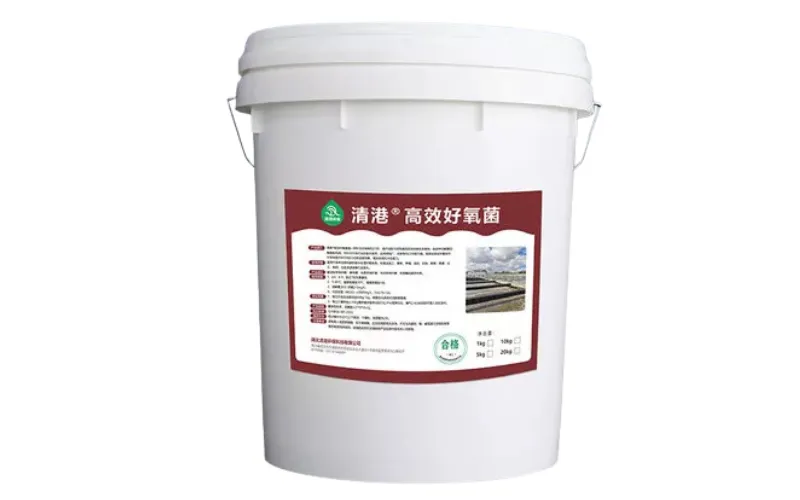
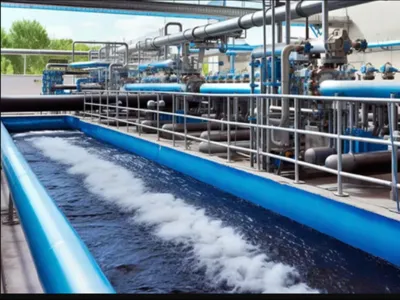
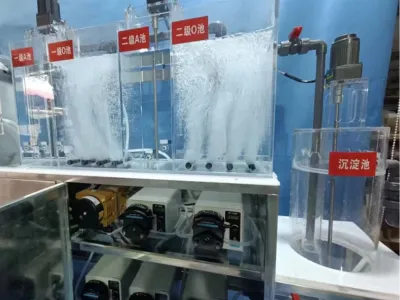
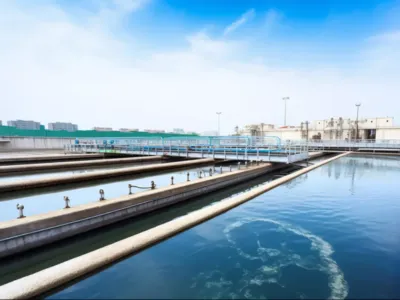
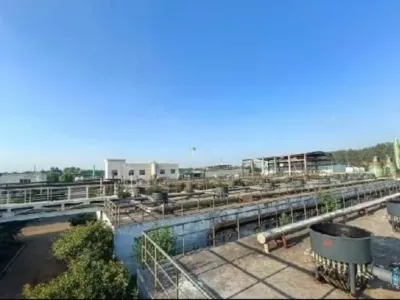
Anaerobic Ammonium Oxidation High-Efficiency Denitrification (Anammox) is an innovative biological nitrogen removal technology based on autotrophic microorganisms, designed to achieve efficient nitrogen removal under anaerobic conditions. This process is driven by Anaerobic Ammonium-Oxidizing Bacteria (AnAOB), primarily from the red bacteria genus, which directly convert ammonium (NH₄⁺) and nitrite (NO₂⁻) into nitrogen gas (N₂) without oxygen, eliminating the need for external carbon sources or full oxidation to nitrate. Recognized as one of the most promising technologies in wastewater treatment, Anammox is particularly suited for high ammonia, low carbon-to-nitrogen ratio wastewater scenarios such as fermentation wastewater, landfill leachate, and sludge digestate. By leveraging natural microbial metabolic pathways and advanced process optimization, it achieves unparalleled economic and environmental benefits compared to traditional nitrification-denitrification methods. This technology not only reduces greenhouse gas emissions (e.g., N₂O) but also minimizes residual sludge production, offering a sustainable solution for wastewater treatment that has gained widespread attention in both environmental engineering and academic research.
The High Ammonia Nitrogen Livestock Wastewater Treatment Solution is a specialized technology designed to address the challenges of high COD, ammonia nitrogen, and suspended solids in livestock wastewater. This solution integrates physical-chemical pretreatment (e.g., coagulation-sedimentation) with biochemical processes (e.g., aerobic treatment and nitrification) to achieve stable effluent quality. It is particularly effective for wastewater with COD around 1500 mg/L, ammonia nitrogen up to 900 mg/L, and suspended solids at 500 mg/L, ensuring compliance with stringent environmental standards.
This solution incorporates advanced process retrofitting, including the addition of coagulation-sedimentation tanks, transformation of MBR membrane tanks into sedimentation tanks, and enhanced sludge return systems with high reflux ratios. The use of Qinggang® high-efficiency aerobic bacteria and autotrophic nitrifying bacteria accelerates system startup and improves treatment efficiency. The process is optimized for a treatment capacity of 200 m³/d, with a commissioning period of just 20 days, demonstrating rapid deployment and operational stability.
By addressing issues such as equipment aging, poor process design, and operational inefficiencies, this solution delivers significant environmental and economic benefits. It reduces the risk of environmental penalties and production shutdowns while minimizing operational costs through optimized resource utilization and reduced sludge production. Tailored for livestock wastewater treatment, it offers comprehensive technical support for both new facilities and retrofitting projects.
| Parameter | Value |
|---|---|
| Treatment Capacity | 200 m³/d |
| Influent COD | Approximately 1500 mg/L |
| Influent Ammonia Nitrogen | Approximately 900 mg/L |
| Influent Suspended Solids | 500 mg/L |
| Effluent COD | < 500 mg/L (assumed compliance) |
| Effluent Ammonia Nitrogen | < 15 mg/L (assumed compliance) |
| Nitrite Nitrogen (NO₂⁻-N) Concentration | Up to 800 mg/L |
| Optimal pH Range | 7.0-8.0 |
| Free Nitrous Acid (FNA) Inhibition Threshold | 0.25 mg/L |
| Commissioning Period | 20 days |
| Sludge Inoculation Volume | 6 tons (80% water content) |
| Suspended Solids Removal Efficiency | >90% |
| Color Removal Efficiency | Achieved via PAC, PAM, and activated carbon |
| Optimal Temperature Range | 30-35°C (assumed) |

The High Ammonia Nitrogen Livestock Wastewater Treatment Process integrates advanced physical-chemical and biochemical technologies to achieve efficient pollutant removal. The process begins with pretreatment in a biogas digester supernatant equalization tank, followed by dissolved air flotation (DAF) and a newly added coagulation-sedimentation tank to remove suspended solids. It then proceeds to a five-stage aerobic tank for COD and ammonia nitrogen degradation, optimized with high reflux ratios and pH control.
The process addresses challenges such as high free ammonia (FA) and free nitrous acid (FNA) inhibition by adjusting operational parameters, including maintaining pH between 7.0-8.0 to mitigate FNA toxicity (threshold 0.25 mg/L). Retrofitting includes converting MBR membrane tanks into sedimentation tanks and adding a tertiary treatment unit with PAC, PAM, and activated carbon to ensure effluent compliance.
High-efficiency microbial agents, such as Qinggang® aerobic and autotrophic nitrifying bacteria, are used to enhance treatment efficiency. The system supports a treatment capacity of 200 m³/d, with a commissioning period of 20 days, and achieves over 90% suspended solids removal through optimized process design.
Livestock wastewater is characterized by high COD concentrations, high ammonia nitrogen levels, high suspended solids, and deep color. Treating such wastewater requires an integrated approach combining physical-chemical and biochemical processes. In a wastewater treatment plant at a pig farm in Shaoyang, Hunan, defects in process design, aging equipment, and poor operational management led to prolonged exceedances of COD and NH₃-N in the biochemical system’s effluent, putting the company at risk of environmental penalties and production shutdown. Qinggang Environmental, after thoroughly understanding the client’s needs, completed system retrofitting and commissioning within just 20 days, helping the company achieve stable compliance with discharge standards.

Problem Diagnosis and Resolution Measures: The wastewater treatment system begins with supernatant from a biogas digester, which is homogenized in an equalization tank before entering a dissolved air flotation (DAF) tank to remove a large amount of suspended solids. It then proceeds to a five-stage aerobic tank for COD and ammonia nitrogen degradation. The system treats 200 m³/d, with influent COD around 1500 mg/L, ammonia nitrogen at approximately 900 mg/L, and suspended solids at 500 mg/L. The key to treating this wastewater lies in effective suspended solids removal during pretreatment and efficient ammonia nitrogen conversion in the aerobic stage.
Through on-site investigation and a comprehensive review of each process unit’s operational status, several issues were identified: First, the chemical dosing pipeline had multiple damages, making stable dosing impossible; the DAF tank, due to years of neglect, had frequently clogged aeration pipes, failing to remove suspended solids effectively, which impacted the downstream biochemical system. The MBR membrane tank’s process design was flawed, requiring frequent manual cleaning, consuming significant labor and chemicals. Second, on-site operators lacked experience, leading to improper control of parameters like dissolved oxygen in the aerobic units, causing the sludge-water mixture in the aerobic tank to turn black. Third, with influent ammonia nitrogen as high as 900 mg/L, high concentrations of free ammonia (FA) were produced, and the accumulation of nitrite (an intermediate in ammonia oxidation) led to free nitrous acid (FNA). Even low FNA levels inhibit nitrifying bacteria (AOB and NOB), reducing their activity and thus lowering nitrification rates.
Process Retrofitting Stage: To address these issues, a system retrofitting plan was swiftly developed: 1) A coagulation-sedimentation tank was added in the pretreatment stage. The DAF tank, due to its age and frequent maintenance needs, was supplemented with a coagulation-sedimentation process to effectively remove suspended solids (SS), ensuring the stability of the downstream biochemical system. 2) The MBR membrane tank was converted into a primary sedimentation tank, and an adjacent tank was retrofitted as a secondary sedimentation tank to improve sludge-water separation and address sludge loss. 3) Nitrified liquid and sludge return pipelines were replaced, adopting a high return ratio to handle high ammonia nitrogen influent. 4) A tertiary treatment unit was added for biochemical effluent, dosing PAC, PAM, and activated carbon to further reduce effluent COD and color. This retrofitting took 7 days, laying a solid foundation for subsequent biochemical system commissioning.
Biochemical Cultivation Stage: 1) Sludge inoculation and acclimation: 6 tons of municipal sludge (80% water content) were introduced into the aerobic tank at once to increase the base sludge volume, followed by one day of aeration with a small amount of raw wastewater. 2) Microbial cultivation: Starting the next day, continuous low-flow influent was introduced. Simultaneously, Qinggang® high-efficiency aerobic bacteria and Qinggang® autotrophic nitrifying bacteria (developed through targeted screening and compounding) were added to the aerobic tank to rapidly degrade COD and create a suitable environment for autotrophic nitrifying bacteria. During cultivation, Qinggang technicians guided on-site operators to monitor effluent COD, ammonia nitrogen, and pH in real-time. Given the high influent ammonia nitrogen, nitrification consumes significant alkalinity, so the aerobic tank’s pH was maintained at 7.0-7.5 to promote the growth and activity of autotrophic nitrifying bacteria, enhancing treatment efficiency.
During commissioning, the Qinggang technical team found that ammonia nitrogen at the end of the aerobic tank consistently failed to meet standards. Testing revealed a nitrite nitrogen (NO₂⁻-N) concentration as high as 800 mg/L, indicating severe FNA inhibition. FNA concentration is inversely proportional to pH: at pH > 7.0, FNA is < 0.191 mg/L, below the NOB inhibition threshold of 0.25 mg/L. By adjusting the internal reflux ratio and precisely controlling the aerobic tank’s tail-end pH between 7.5-8.0, FNA toxicity was reduced. After a week of commissioning, the aerobic and autotrophic nitrifying bacterial communities were successfully established. With influent flow gradually increased to design capacity, the system’s effluent COD and ammonia nitrogen consistently met the client’s discharge standards.
In the subsequent tertiary treatment stage, quantitative coagulation-sedimentation tests determined the optimal dosing of PAC, PAM, and activated carbon, ensuring effluent suspended solids and color also met discharge standards. Leveraging extensive environmental microbial resources, Qinggang Environmental provides clients with a full-process solution covering system diagnosis, retrofitting, and commissioning. We not only focus on emergency biochemical system repairs but also establish long-term service mechanisms—combining online and offline support—to enhance on-site operators’ technical skills, improve wastewater treatment system efficiency and stability, and ultimately achieve both environmental and economic benefits.
Contact us to explore how granular sludge can transform your wastewater treatment operations.
© 2025 Environmental Microbial Agent Manufacturer | All rights reserved.